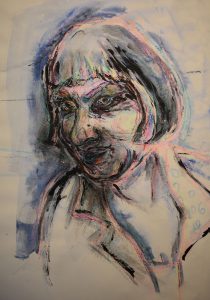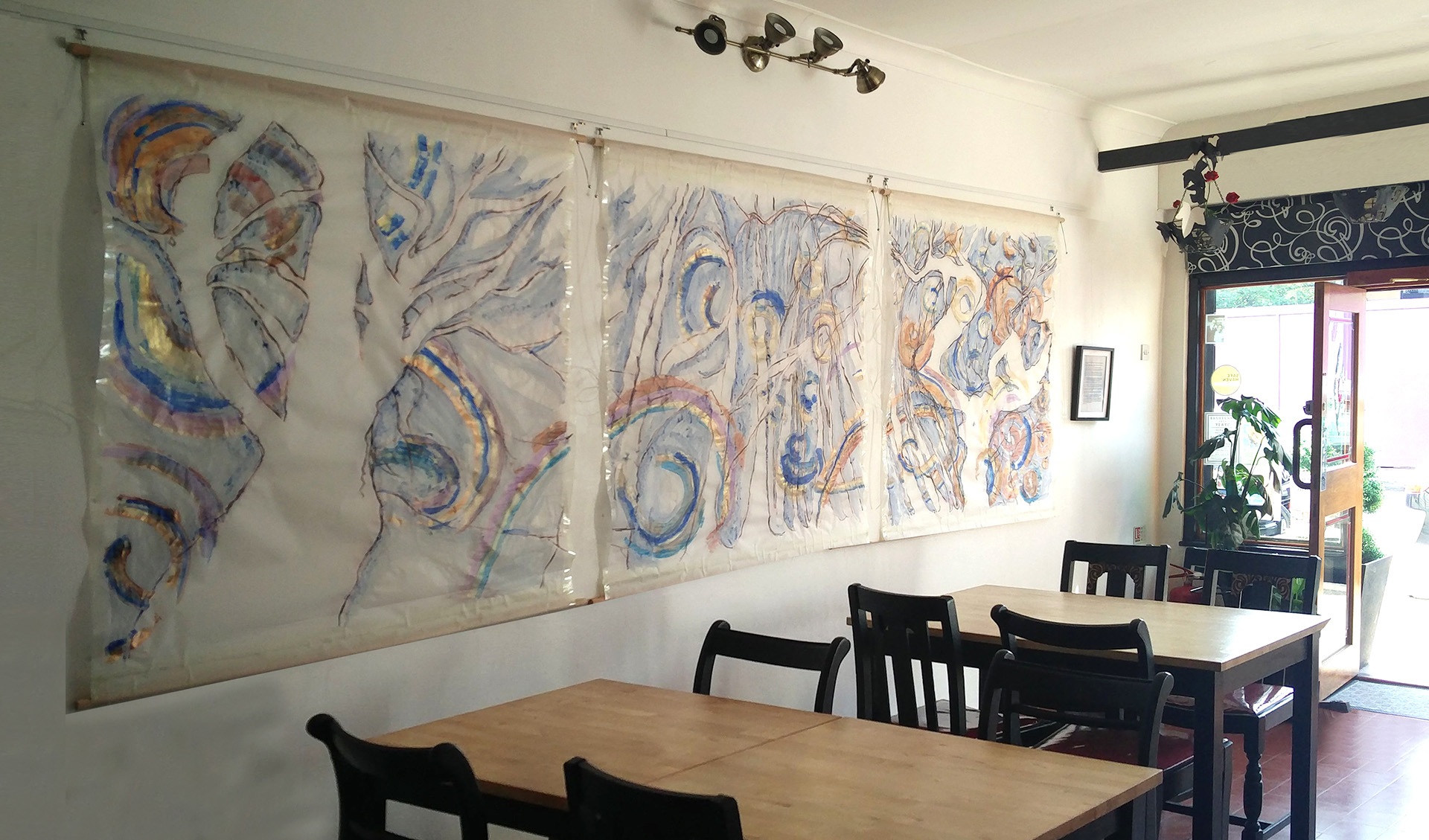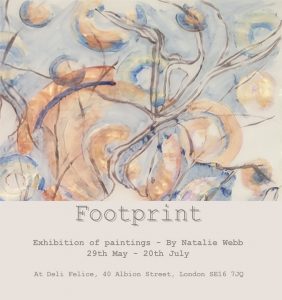Footprint
29 May – 20 July 2018
Deli Felice, Albion Street, London SE16
A tree’s beauty grows as it ages. Its texture, wrinkles, folds and curves increase its attraction, becoming signs of strength. Why do humans see their own bodies in such a different context? We try to delay the signs of aging, in the pursuit of smooth flawless skin, craving perfection.
The trees in this artwork have been left flawless and smooth; do they become more beautiful? A tree is aged by the rings inside its trunk, and its footprint marked only by its height and the size of its root structure. If pruned correctly it becomes stronger, growing upwards searching for light. Its roots spread downwards searching for water, which anchors it and when it dies it returns to the earth.
Fibonacci observed how trees and plants grow in a sequence, now referred to as ‘nature’s code’. The sequence of 1,1,2,3,5,8,13,21,34,55… Would you be proud of your digital footprint if it could be quantified into a sequence as beautiful? If it became a visual form, or sculpture attached to your body, with everything you ever search, buy, post, including your personal, medical and financial information there for all to see? How will your footprints be measured by future generations as it will no longer erode or wash away?
What would your digital footprint look like? Could you compare it to the growth of a tree or the rings that age it, or is it an artificial sculpture jutting up into the sky? Maybe it is more jumbled like a ball of tangled wool? In the future could this be the only way to identify your age as medical advances will help people hold on to a youthful appearance, faces will become untouched by the seasons and weather. Could your digital footprint be pruned? Then only what you desire to show of yourself sits above. You are in control of what you show, but are you in control of what others see?
How do others perceive you? How much is required for others to recognize you? Your face, your stance, the way you move, your voice, how you write or comment? The art you make or is made in your image? Your likes or shares? Are you seen now by how you travel, places you visit, what you spend your money on, how you vote, what pollution you have created, how well you fight the signs of ageing?
Now that everyone takes endless photos and film, memories are formed by the careful curation of content to express that ‘perfect moment’. What will hold your attention in the future? Is it a photo or film of your child, or the artwork or story they created that day?
I hear the media refer to ‘the rise of the Nobody’, each of us has become a ‘brand’. We are the celebrities in our own reality. But, is it a true representation? Wouldn’t we only show the best version of ourselves, is this artificial and are we fake?
Advances in facial recognition technology are making it easier to pick out human faces in a crowd, but is it as easy to recognise a tree? Are these trees familiar? Could you find them in Southwark Park, Neptune Street Park, King George’s Field, or King Stairs Gardens? If one disappeared would you notice?
 Most humans see faces in inanimate objects, it’s called Pareidolia. It’s the psychological phenomenon that causes the human brain to lend significance and facial features in particular to random patterns. I found myself seeing faces and human forms within the trees I sketched imagining each tree has its own personality while sketching and researching this artwork. I formed respect for each tree. Could this be compared to a ‘like’ and my exhibition to a ‘share’? As I chose the trees around me to inspire this artwork, am I making them celebrities amongst other trees?
Most humans see faces in inanimate objects, it’s called Pareidolia. It’s the psychological phenomenon that causes the human brain to lend significance and facial features in particular to random patterns. I found myself seeing faces and human forms within the trees I sketched imagining each tree has its own personality while sketching and researching this artwork. I formed respect for each tree. Could this be compared to a ‘like’ and my exhibition to a ‘share’? As I chose the trees around me to inspire this artwork, am I making them celebrities amongst other trees?
Read the review of the exhibition here




